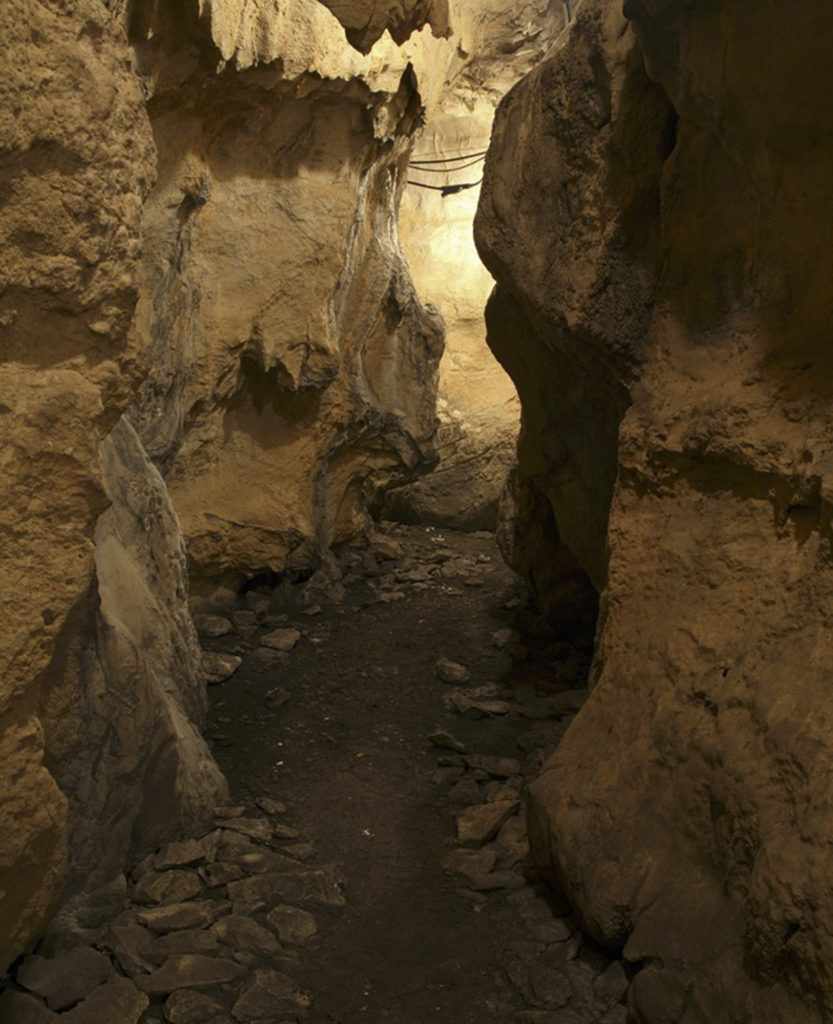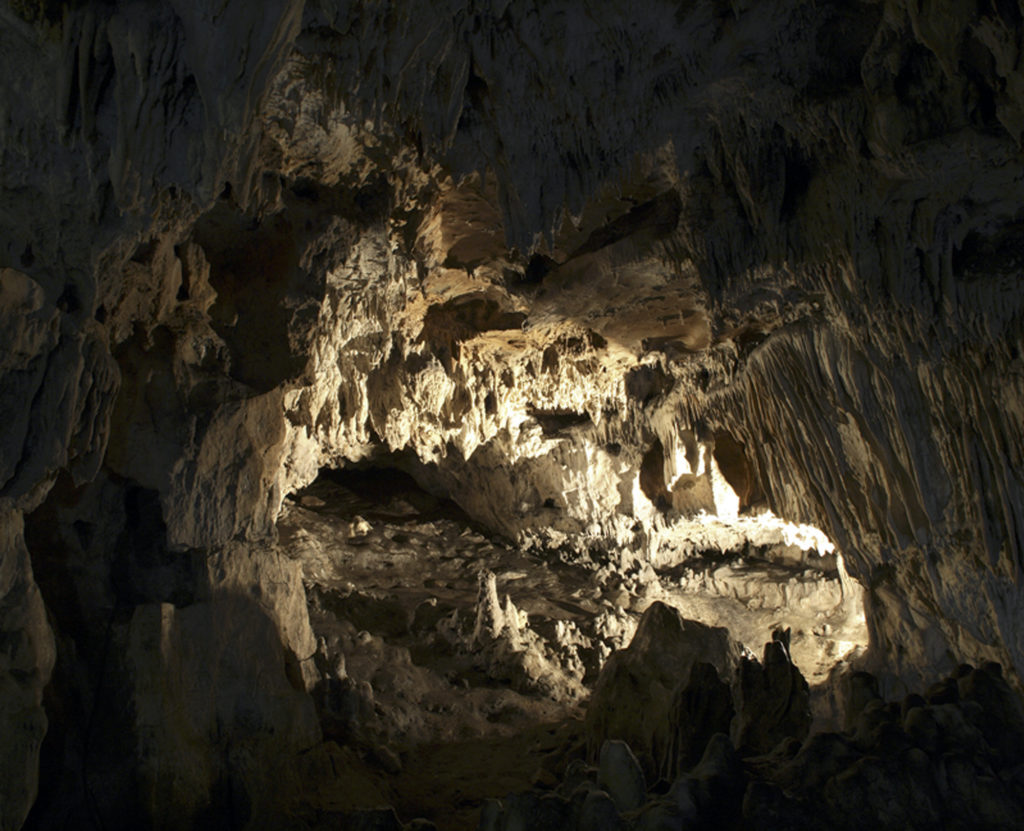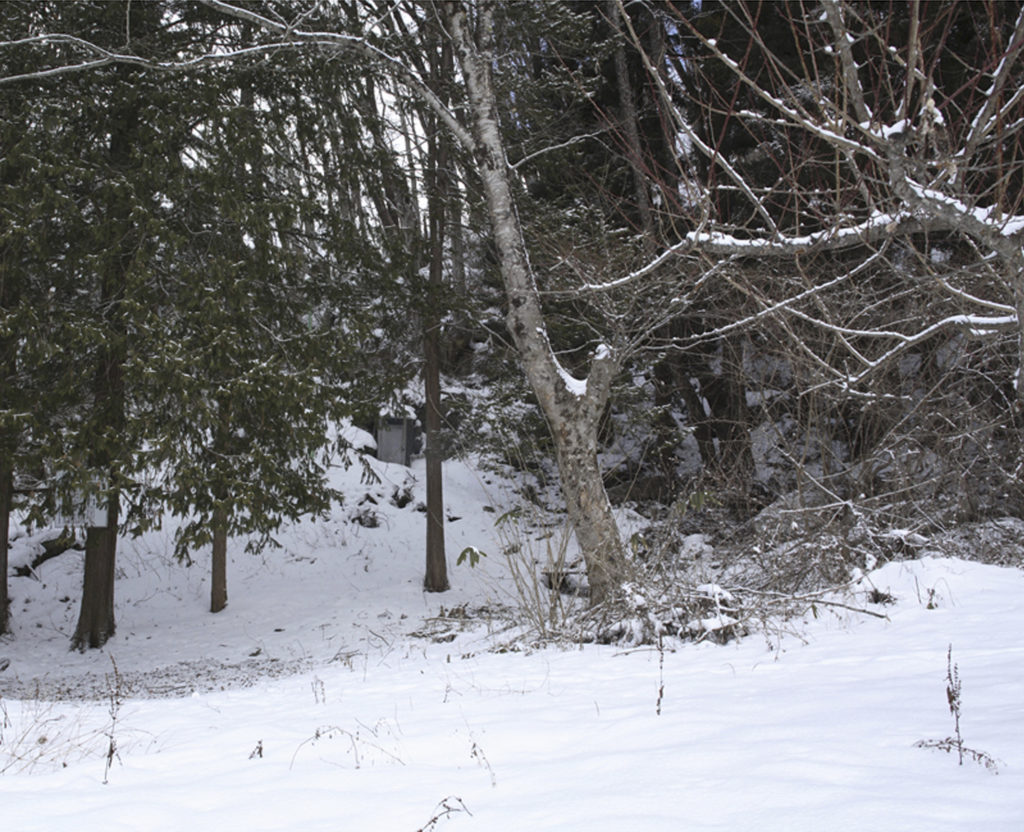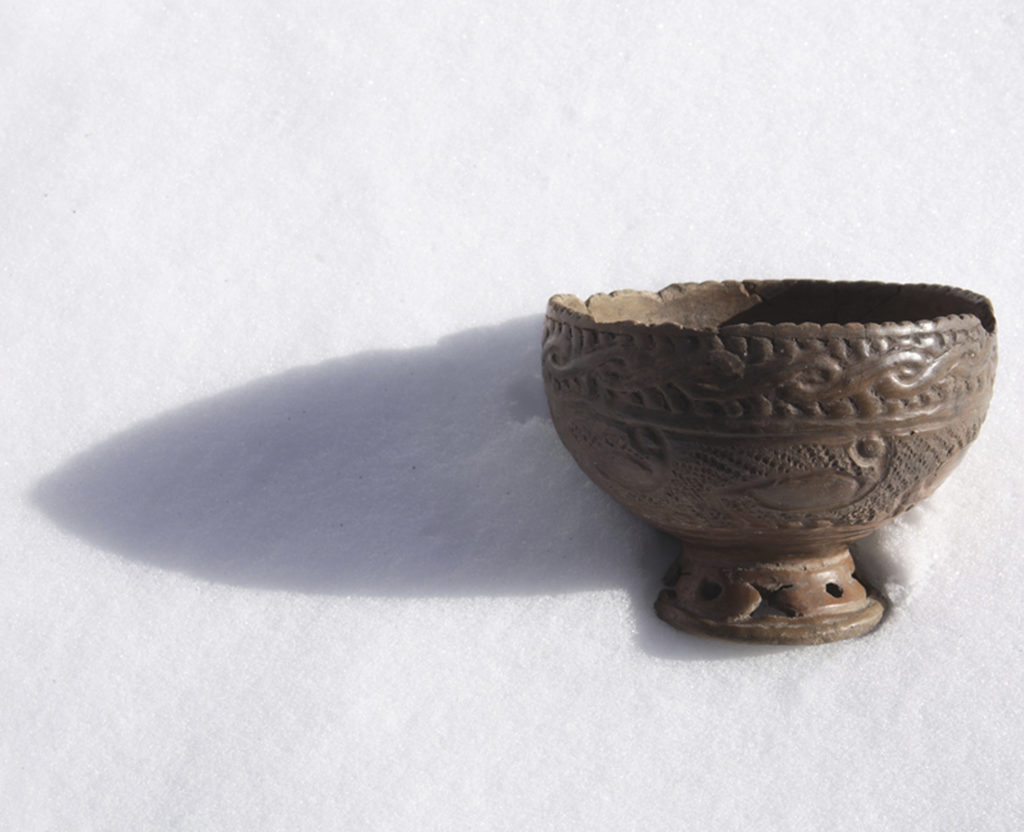Into the Jomon People’s Living Space
The night bus rolled through the remnants of the mid-February blizzard into Morioka Station at dawn. The road was frozen and the terminal devoid of life. Only the misty cloud of my breath appeared and disappeared. I stepped into the perfectly sill interior of a snow hut that someone had built nearby. I was surprised that sheltering from the wind could so quickly warm me. After some time in reflection, I looked out the window at a sky that promised a sunny day, the light reflecting off the brilliant snow. I was stronger, my backpack lighter when I set out on my way.
My destination was Shiwa County, Iwate. The snow grew deeper along the hilly paths on the east side of the Kitakami River basin, footprints of small animals along my path encouraging me. I pressed on toward the limestone cave while listening to my guide, Takashi “Matsu-san” Matsuzaka, tell stories about its discovery in the 1920s. The cave was found by chance when a traditional Matagi hunter’s dog fell into a pit. Later, the dark depths of the cave produced pottery, stone tools, and bone tools dating back to the Late Jomon and Final Jomon periods. The relics also included deer, boar, and bear bones, which attracted a small research team to what they believed were the ruins of a Jomon horizontal cave dwelling. At the time, the site where a fire was made remained as is, and pots lay on the ground as if the Jomon people were there only moments ago. There was even a skull, although it is now lost—perhaps a researcher took it as a keepsake. What was left was transferred to the local museum for storage. I asked for permission to see the collection. The mountain of pottery fragments spoke of the total volume that had been excavated. I held each piece and traced the surface with my fingertips. Some retained their original shape, like one vermillion-lacquered elevated bowl with pedestal that gleamed with a special shine under the winter sky. The rounded edges felt smooth and gentle, and fit in the hand as comfortably as if the piece had enjoyed regular use until recently instead of millennia ago.

The cave’s narrow passage led to an unexpectedly large space. Matsu-san smiled and suggested that the dome likely served as a community gathering place. Bats were hanging overhead, curled up and hibernating. Behind me, Matsu-san reached for one of them and spread its wings to show me. The greater horseshoe bat is the size of about a pair of adult-sized palms. A colony of some 90 lived in the cave at this time. I was surprised to learn that they traveled well over 20 kilometers every day in search of food.

I scanned the cave chamber from a rocky spot where the Jomon people might have sat. As I imagined the incredible amount of time that had passed in this space, I felt as if I were experiencing the miracle of a pristine scenery that had survived from the Jomon period, my transient presence having returned to the soil and resurfaced as the shadow of an empty pot. The air was as still as ever, and I heard the sound of a distant stream. Groundwater, Matsu-san told me. The stalagmites rising from the cave floor like mushrooms created the illusion of gravity standing on its head. A local caving club once explored the area and uncovered fish bones from the soil. Remnants of an ancient meal, the voice behind me said.

Back outside, the wind blew softly around me, carrying the scent of the surrounding mountains. As I walked on, the sun shone on the dazzling white surface of the snowfield, the shadowy contours of my footprints silently following behind.
<From PAPERSKY no.38 (2012)>

Jomon Fieldwork | Nao Tsuda × Lucas B.B. Interview
A conversation between ‘Jomon Fieldwork’ Photographer and writer Nao Tsuda and Papersky’s Editor-in-chief Lucas B.B. The two discuss the ways Jomon culture continues to play an important role in modern day Japan. The video was filmed at Papersky’s office in Shibuya in conjunction with Tsuda’s exhibition “Eyes of the Lake and Mother Mountain Plate” held at the Yatsugatake Museum in Nagano.
Nao Tsuda | Photographer
Through his world travels he has been pointing his lens both into the ancient past and towards the future to translate the story of people and their natural world.
tsudanao.com











